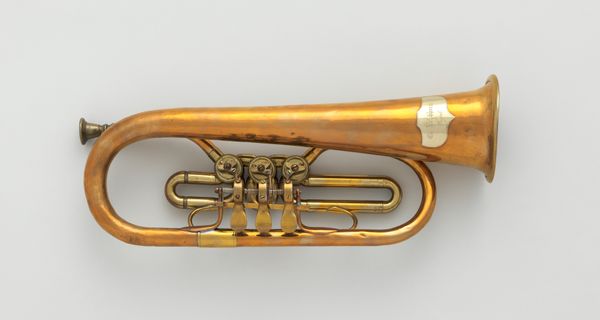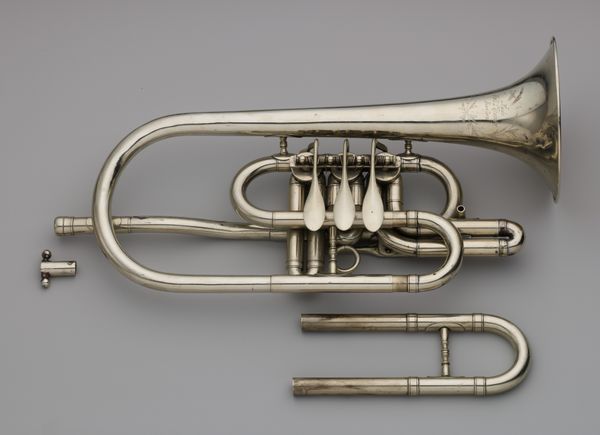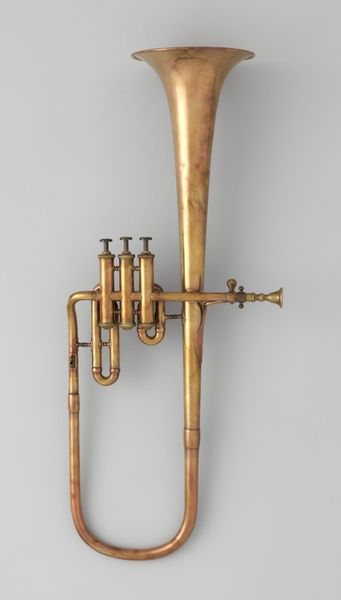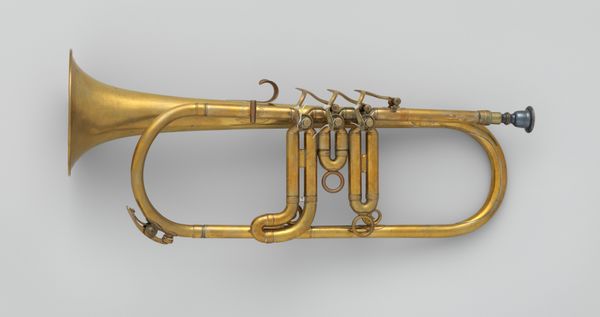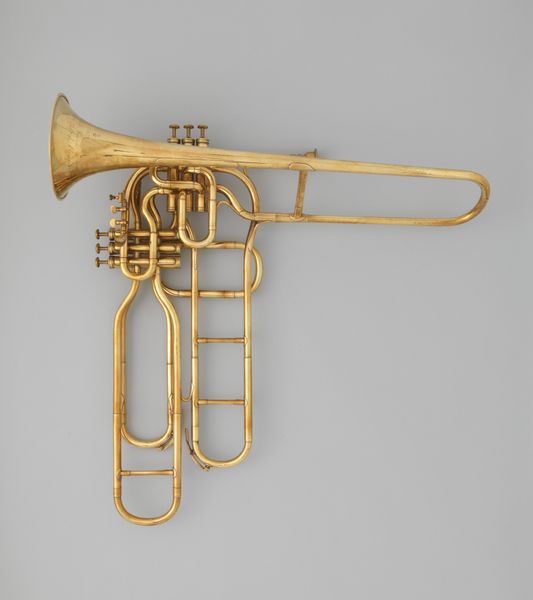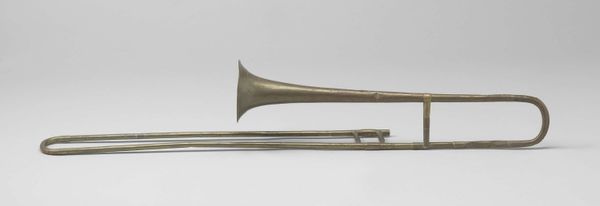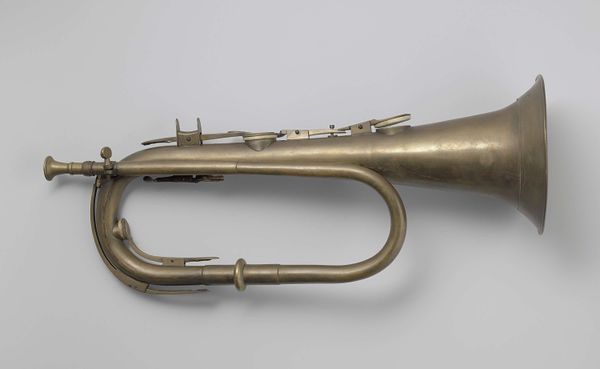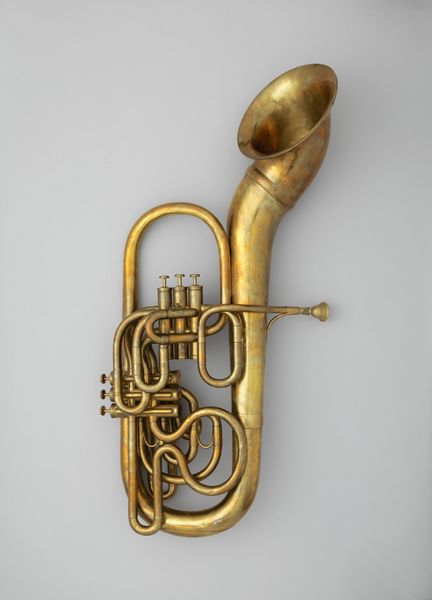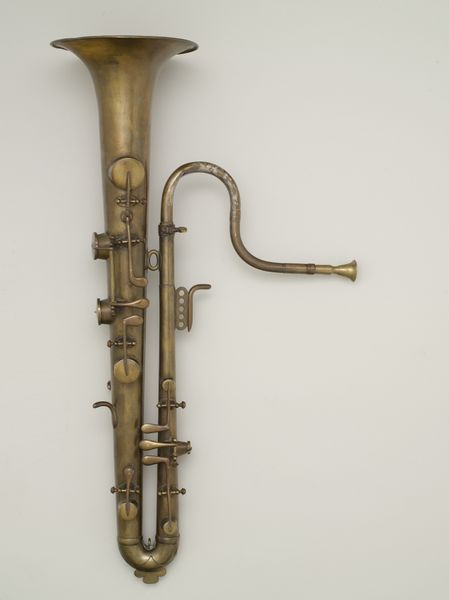
brass, metal, photography
#
brass
#
metal
#
photography
#
musical-instrument
Dimensions: Height: 34 in. (86.3 cm) Diameter (of bell): 9 1/2 in. (24.2 cm)
Copyright: Public Domain
Curator: Let's take a closer look at this baritone shoulder horn in B-flat, crafted by Henry G. Lehnert, sometime between 1875 and 1890. It’s currently held in the collection of the Metropolitan Museum of Art. Editor: The immediate impression is that of well-worn, burnished metal. There's a warmth in the patina, a testament to use and age. I'm intrigued by the seemingly simple construction for such a complex purpose. Curator: These instruments played a key role in shaping public life in the late 19th century. Brass bands were incredibly popular, and instruments like these allowed for a greater range of musical expression at community events. Editor: The metalworking itself fascinates me. The seams, the joints, all the evidence of hands shaping brass. How was this manufactured, by hand, or using new technologies for mass production? Curator: It would have been a mix. Factories produced the initial components, but hand-finishing and assembly were vital to ensure quality and tuning. Think about the labor conditions. Skilled artisans competing with larger-scale industrial processes. Editor: Yes, how industrialization altered the nature of instrument making is intriguing, especially the impact on localized craft production and availability of music among different social classes. Curator: Precisely. Mass production meant instruments became somewhat more accessible, fostering broader cultural participation. The shoulder horn allowed marching bands to have that deeper, richer sound on the move, engaging more people. Editor: You know, I look at this now and consider where the raw brass comes from and how global systems were involved. Where was the brass mined and how was it distributed globally? Curator: It’s also interesting to consider the music it made possible – was it stirring patriotic tunes, or the developing sounds of jazz? Was it mainly music intended to promote a specific social ideal or purely for entertainment? Editor: Brass instruments in general possess such raw, honest materiality and seeing one with such a beautiful patina like this makes me think about the countless performances it’s supported. The sonic capabilities really connect this physical object to a range of possibilities, depending on who used it. Curator: A lovely summation. The confluence of social trends and industrial ingenuity has shaped this object. Editor: Absolutely! For me, it really highlights the intricate intersection of labor, skill, and accessibility within a rapidly changing world.
Comments
No comments
Be the first to comment and join the conversation on the ultimate creative platform.
